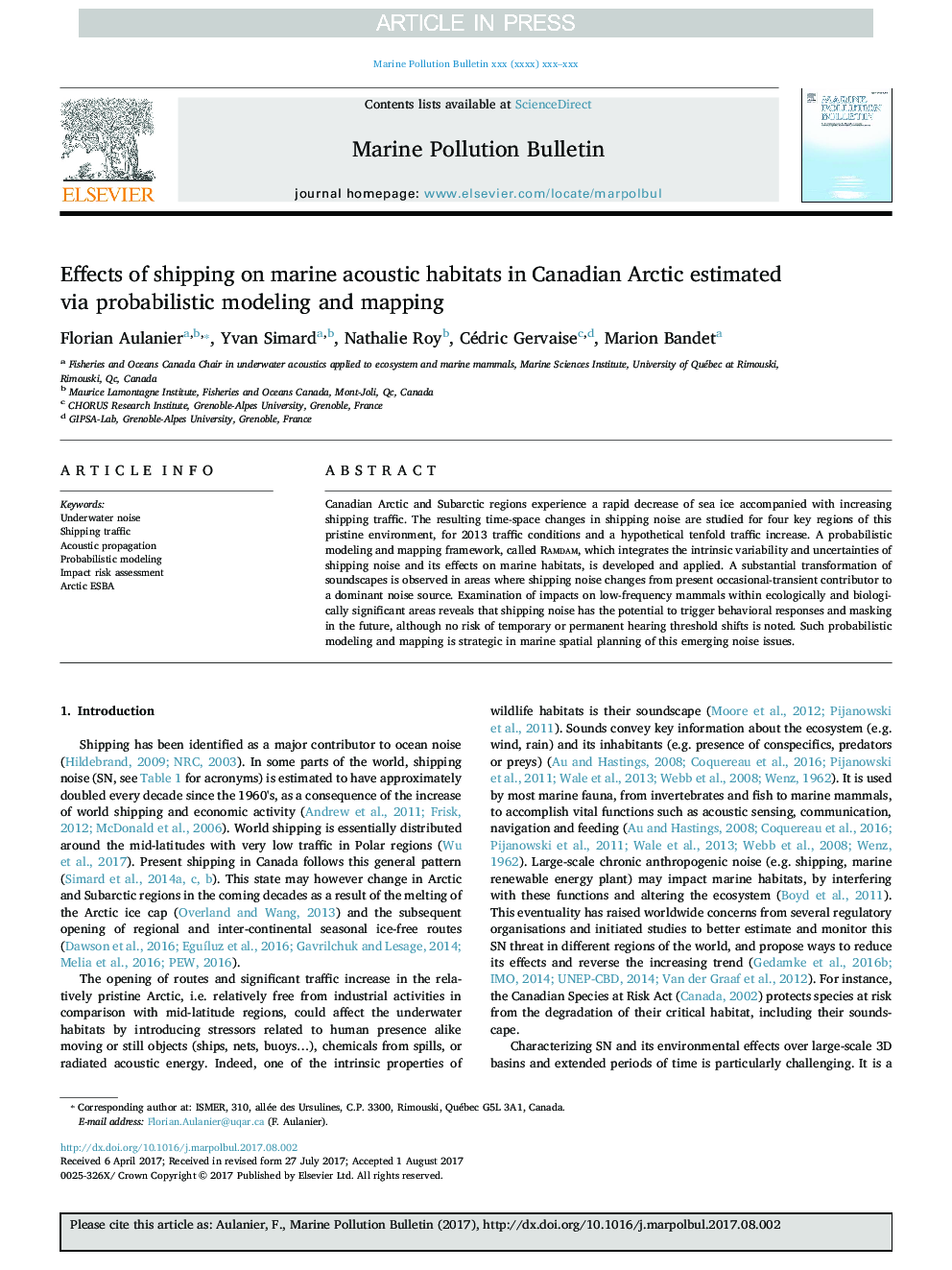| Article ID | Journal | Published Year | Pages | File Type |
|---|---|---|---|---|
| 8871884 | Marine Pollution Bulletin | 2017 | 17 Pages |
Abstract
Canadian Arctic and Subarctic regions experience a rapid decrease of sea ice accompanied with increasing shipping traffic. The resulting time-space changes in shipping noise are studied for four key regions of this pristine environment, for 2013 traffic conditions and a hypothetical tenfold traffic increase. A probabilistic modeling and mapping framework, called Ramdam, which integrates the intrinsic variability and uncertainties of shipping noise and its effects on marine habitats, is developed and applied. A substantial transformation of soundscapes is observed in areas where shipping noise changes from present occasional-transient contributor to a dominant noise source. Examination of impacts on low-frequency mammals within ecologically and biologically significant areas reveals that shipping noise has the potential to trigger behavioral responses and masking in the future, although no risk of temporary or permanent hearing threshold shifts is noted. Such probabilistic modeling and mapping is strategic in marine spatial planning of this emerging noise issues.
Related Topics
Physical Sciences and Engineering
Earth and Planetary Sciences
Oceanography
Authors
Florian Aulanier, Yvan Simard, Nathalie Roy, Cédric Gervaise, Marion Bandet,
